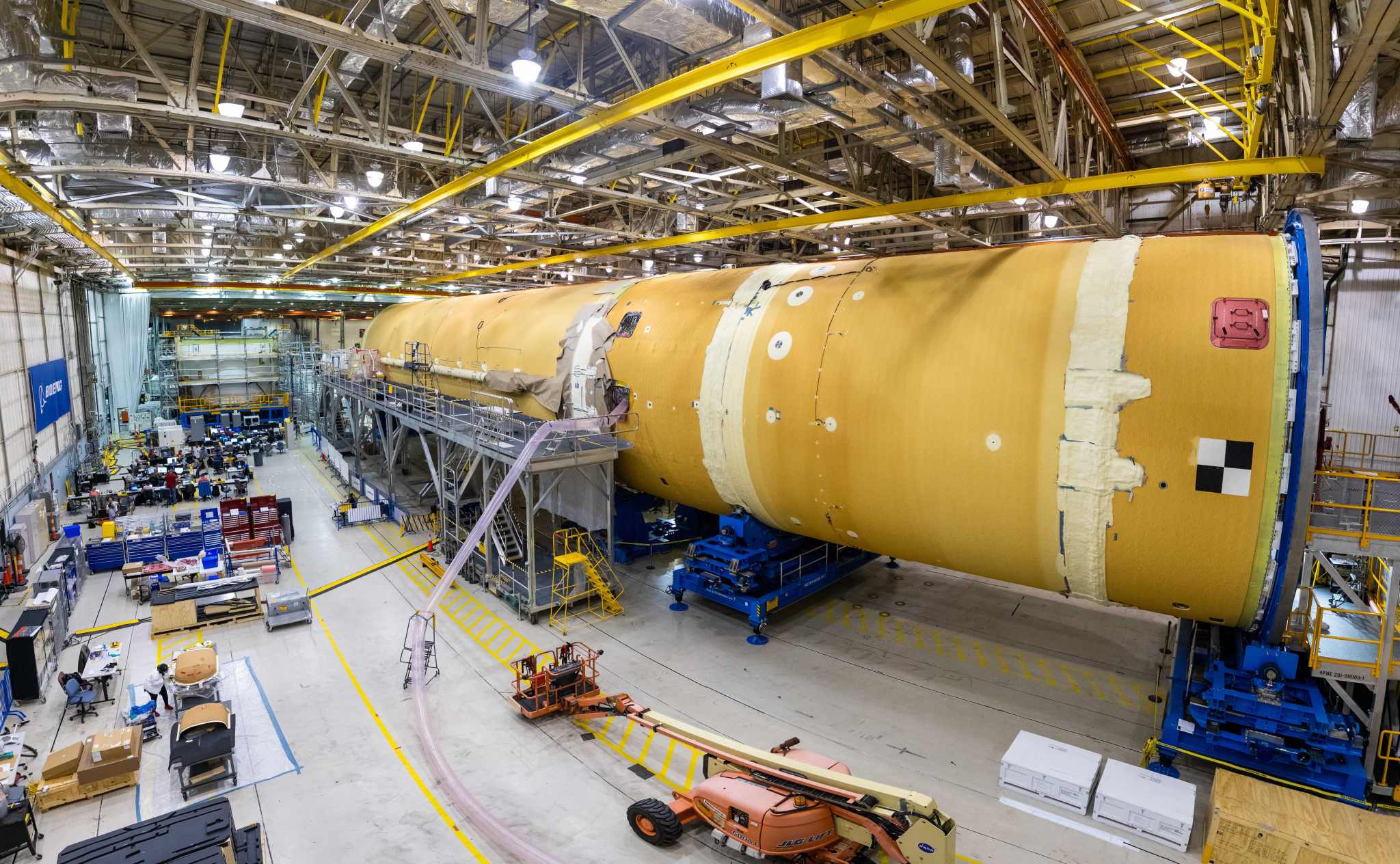
Media are invited to accompany NASA Administrator Jim Bridenstine Thursday, Aug. 15, on his visit to the agency’s Michoud Assembly Facility in New Orleans, where engineers are preparing to add the final section to the core stage of the rocket that will power NASA’s Artemis 1 lunar mission.
Bridenstine will meet with members of the Space Launch System (SLS) program to discuss and view progress on the rocket and take questions from media at 11:10 a.m. CDT in front of SLS’s 212-foot-tall core stage.
U.S. media who would like to attend the event should contact Tracy McMahan at 256-544-0034 or tracy.mcmahan@nasa.gov no later than 5 p.m. Tuesday, Aug. 13, and plan to arrive at Michoud by 10:30 a.m. Aug. 15, with at least one form of government-issued photo identification. Long pants and flat, closed-toe shoes are required.
Assembly of the core stage, the largest and most complex stage NASA ever has built, remains on schedule for completion before the end of the year. Comprised of two liquid propellant tanks and four RS-25 engines, it will produce more than two million pounds of thrust to send NASA’s Orion spacecraft, crew and cargo to the Moon.
NASA is working to land the first woman and the next man on the Moon by 2024. SLS is the only rocket that can send Orion, astronauts and supplies to the Moon on a single mission. The rocket, Orion spacecraft and Gateway in orbit around the Moon, are NASA’s backbone for deep space exploration.
For more on NASA’s Artemis program, visit:
-end-
Bettina Inclan / Matt Rydin
Headquarters, Washington
202-358-1600 / 202-358-4503
bettina.inclan@nasa.gov / matthew.m.rydin@nasa.gov
Shannon Segovia
Marshall Space Flight Center, Huntsville, Ala.
256-544-0034 / 256-544-3774
shannon.segovia@nasa.gov























